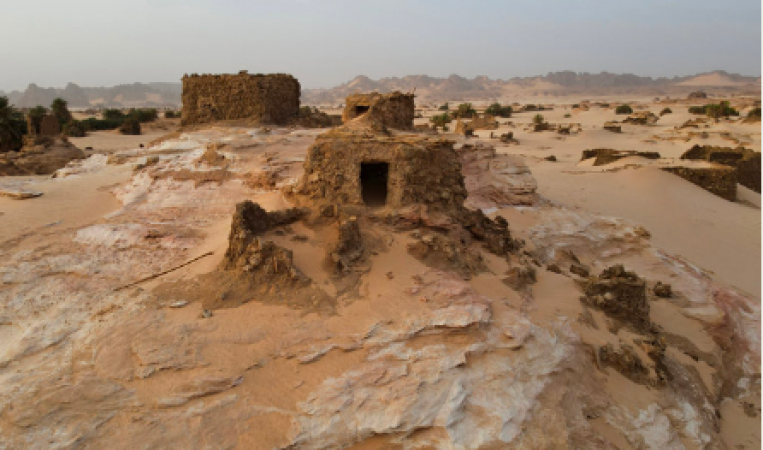
Djado: One of the most amazing and rewarding sights in the Sahel can be found after a difficult journey across the northeastern Niger desert: fortified villages made of salt and clay perched on rocks with the Saharan sands laying siege below.
Travellers have admired the "ksars" of Djado for generations, marvelling at their crenellated walls, watchtowers, hidden passages, and wells, all of which bear witness to a skilled but unidentified hand.
There have never been satisfactory answers to the questions of who decided to establish this outpost in a scorched and desolate area and why they chose to do so. And the reason it was abandoned is just as alluring.
Also Read: Bangladesh experiences its worst heat wave in decades, closing schools and cutting power
To unravel the mysteries, no archaeological excavation or scientific dating has ever been conducted.
Djado is located in the Kawar oasis region, 1,300 km from Niamey, the nation's capital, and close to Niger's tumultuous border with Libya.
Kawar is now a hub for the trafficking of drugs and weapons despite once serving as a crossroads for caravans travelling across the Sahara.
All but the most tenacious traveller are deterred by its gloomy reputation.
Also Read: Air India flight headed for San Francisco Emergency lands in Siberia
According to Sidi Aba Laouel, mayor of Chirfa, the commune home to the Djado sites, "there have been no foreign tourists since 2002."
"The community had economic potential when tourism was strong."
The discovery of gold in 2014 was somewhat of a blessing. In addition to the bandits who hide out in the mountains, it saw an influx of miners from all over West Africa who brought life and some economic relief.
Few newcomers appear eager to visit the ksars.
The mayor is circumspect when discussing local history because he is aware of the many knowledge gaps.
He makes reference to old photocopies of an article by Albert le Rouvreur, a French military officer stationed in Chirfa during the colonial era who attempted unsuccessfully to shed light on the origins of the site.
The Sao, who have lived in the area since ancient times, were the first people to be recorded as residing in Kawar and may have built the first fortifications.
But it's unclear exactly when they settled there. The palm roofs on a few of the remaining ksars indicate that they were constructed later.
The Kanuri people settled in the region between the 13th and the 15th centuries.
In the 18th and 19th centuries, successive waves of nomadic raiders, including the Tuaregs, Arabs, and finally the Toubou, nearly destroyed their oasis civilization.
The beginning of the end of the ksars as a line of defence against invaders began with the arrival of the first Europeans in the early 20th century. In 1923, the French military captured the region.
The Kanuri and Toubou today coexist peacefully, but the "mai," or traditional chiefs of the area, are descended from the Kanuri tribe. They serve as guardians of oral history and authorities on tradition.
Even so, there are still many unanswered questions.
"Even our ancestors were ignorant. A Kanuri leader named Kiari Kelaoui Abari Chegou claimed, "We didn't keep records.
The Fachi oasis, famous for its fortress and old town with nearly intact walls, is located 300 kilometres south of Djado.
The ancient city's symbolic locations are still used today for ritualistic rites.
According to Kiari Sidi Tchagam, a Fachi traditional authority, the fortress is "at least two hundred years old."
He said, echoing theories of Turkish influence, "According to our information, there was an Arab who had come from Turkiye; it was he who gave people the idea of making the fort there.
Although the ruins are a source of pride, the descendants are concerned that the rain-threatened, delicate salt buildings are not being properly protected.
Djado has been inactively included on a preliminary list of UNESCO World Heritage Sites since 2006.
Also Read: HRW: Lawyers in junta courts in Myanmar experience intimidation and harassment
It is extremely important that it be listed as a UNESCO World Heritage Site, according to Tchagam.
This fort serves as a constant reminder of who we are because it represents so much of our culture and history